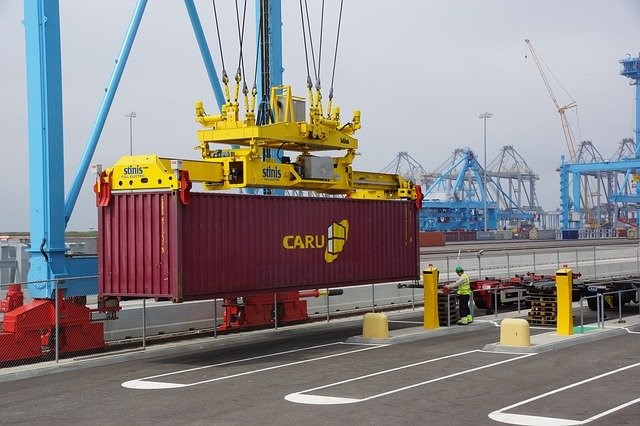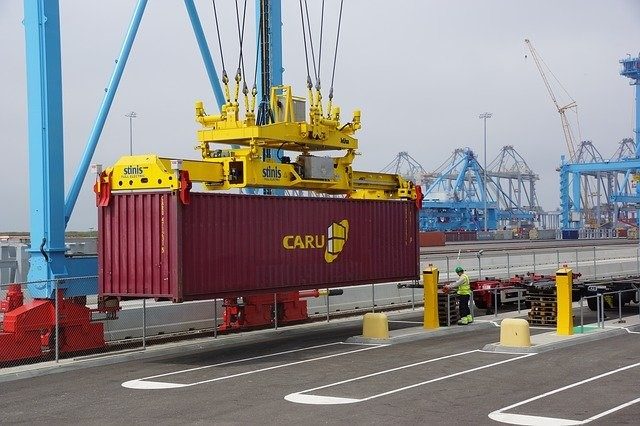Every exporter must have heard the terms “tare weight”, “gross weight” and “net weight” while booking inland logistics and shipment services. The role of inland haulage is as crucial as that of seaborne transportation completing the process of shipment. And just like the freight shipments must abide by the rules and regulations laid down by the port authorities, there are safety guidelines for inland transportation as well. In consideration of the same, the concept of container weight verification was brought by the IMO (International Maritime Organisation). As per this amendment, the SOLAS (Safety of Life At Sea) Regulation VI/2 came into effect.
The new amendments cover container weight regulations by limiting the total Verified Gross Mass (VGM) of the shipping containers. The concept of tare weight (unladen weight) comes concerning the calculation of gross weight (laden weight). The exporters and shippers who know and understand this concept in detail will be able to make accurate packages and container bookings. It also becomes more manageable to avoid last-minute modification to the shipping crates and palettes if the container becomes overweight. Therefore, it is vital to understand the importance of the two.

Maintaining the VGM bar allows the shippers to evade the possibilities of accidents while loading and unloading.
What Is Tare Weight and Gross Weight?
The rules and safety guidelines for moving cargo through the inland logistics make it compulsory for the traders to know and understand the difference between the two types. Breaking the bylaws is not what a shipper or trader wants to commit. The more details one knows, the more convenient it becomes to process the freight shipments.
Tare Weight (Unladen Weight)
In simple terms, the tare weight is the defined mass of a vehicle or a shipping container. It is also commonly referred to as the “unladen weight”. When there is no product or external force on a trailer or tractor, the vehicle exerts only the load of its composition. The figure that comes on the weighing scale at this time is usually taken as the tare weight.
The shipper can either calculate it by themselves at the time of loading or mote down the aforementioned figures. Yes, more often than not, the tare weight is lettered on the intermodal container to help the shippers in calculating the gross weight. And if it is not available, one can calculate it easily by deducting the net weight of the goods from the gross weight of the container.
Gross Weight (Laden Weight)
The gross weight is the total mass of the trailer and tractor and all its load or contents. In the case of intermodal shipment, the combination of the weight of the container and the chassis is taken along with the total weight of the cargo. The gross weight is also referred to as “laden weight” in some of the countries. When the tare weight is not available, the gross weight is very helpful in calculating the same.
The Importance of Tare Weight and Gross Weight
With the tare weight known, it becomes more accessible for a shipper to calculate the costs related to the transportation of the goods. One can assess the approximate taxation and tolls related to rail, trucks and barges. Since the 2016 amendment has made it compulsory to abide by the SOLAS regulations, the significance of knowing gross weight has also increased.
Today, it has become crucial to know these technical values to calculate the related values. The gross weight does not only help in comparing the VGM but also calculating the tare weight. To make things simpler, the shippers can ask for the tare weight at the time of booking the shipment. One must also note that the printed tare weight differs from the present calculator if the container is old. Wear and tear causes vehicles and trailers to lose their natural mass in the long run.
Advantages to the Shippers and Traders
The advantages of knowing the tare weight, net weight and gross weight values impact the costs of shipment directly. With the knowledge of these values, it becomes easier for the traders to maintain the weight balance of the consignment. Although there might be variations in the defined VGM in different states and countries, one can get a rough idea with these accurate values.
Avoiding accidents or damages from cargo mishandling also reduces to a great extent. In some countries, overweight consignments that violate the regulations of the SOLAS regulations are likely to face legal trouble. Therefore, shippers and exporters/importers with acute knowledge of the tare weight and its uses are likely to enjoy smooth and hassle-free shipments.
The calculation of tare weight or gross weight may not always be 100% accurate. Considering the same, most of the government authorities provide 2-5% tolerance if there is any difference detected. If a trader partners with a reliable shipping service provider, he will not have to worry about mismanagement or overweight of the cargo. Therefore, it is better to seek guidance in case of underlying confusion!

